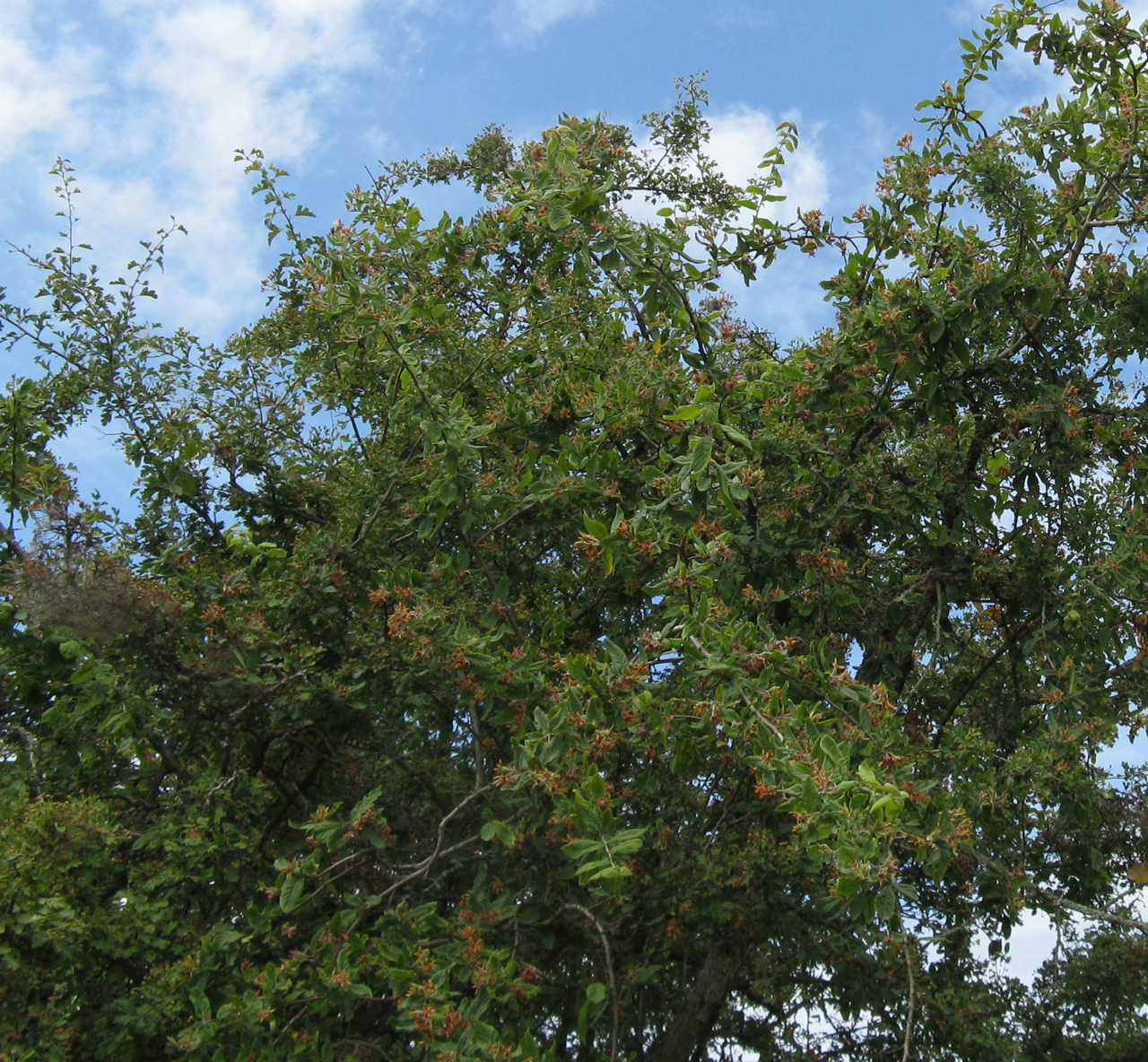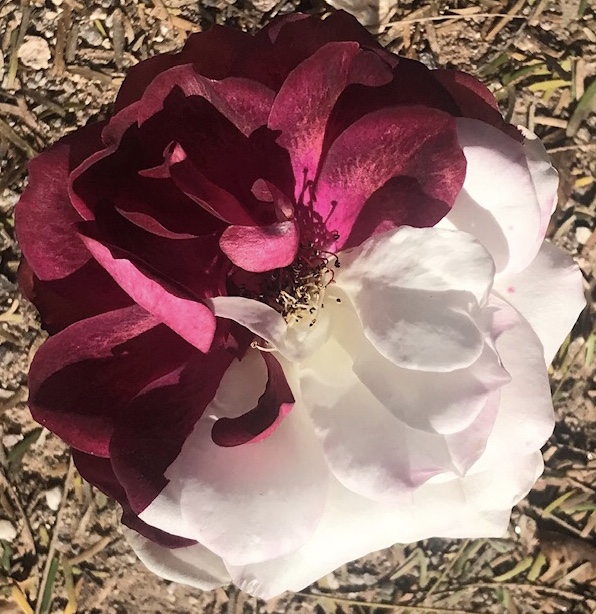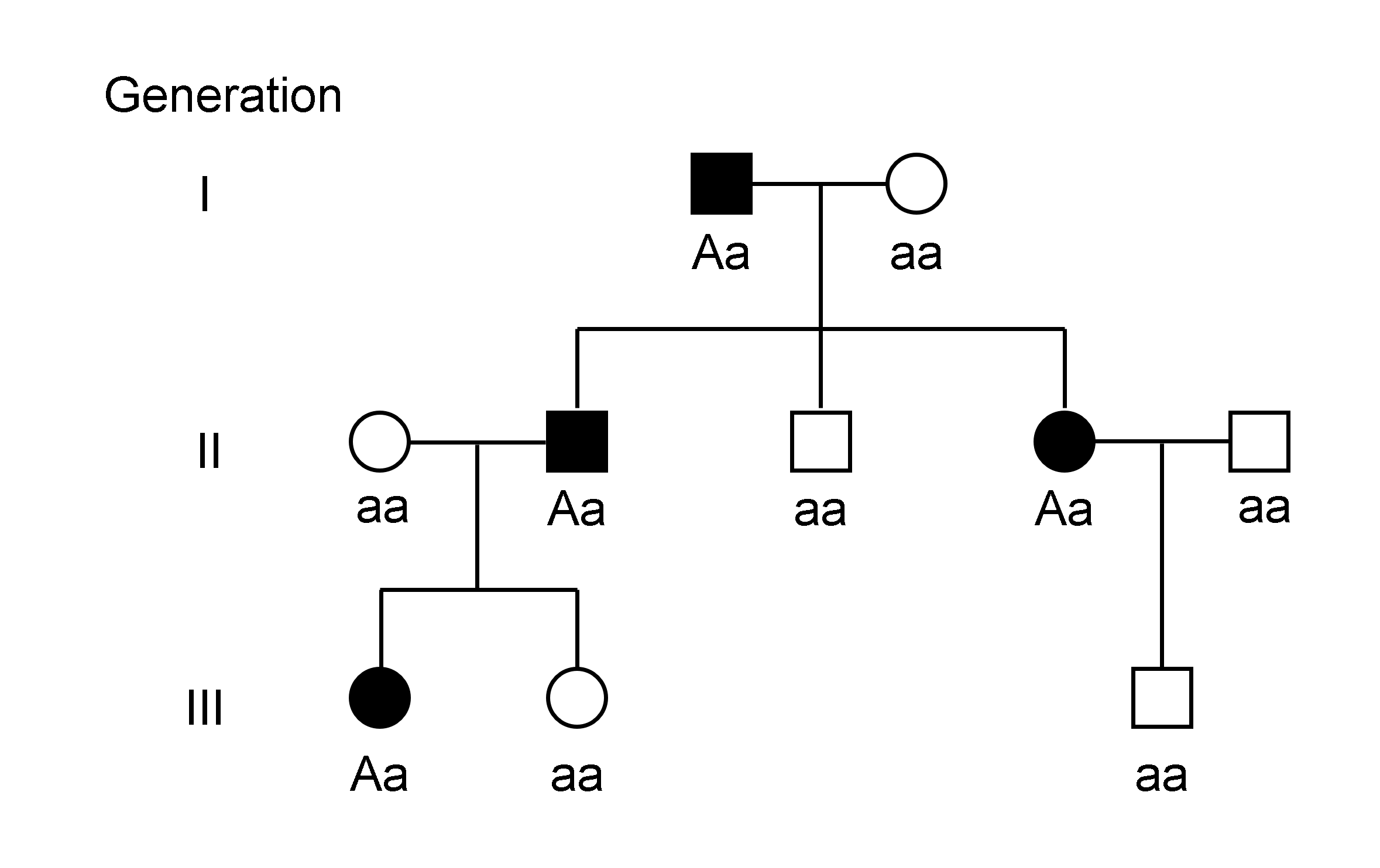|
Laburnocytisus 'Adamii'
+'' Laburnocytisus'' 'Adamii' (also known as Adam's laburnum or broom laburnum) is a horticultural curiosity; a small tree which is a graft-chimaera between two species, a laburnum, ''Laburnum anagyroides'', and a broom, '' Chamaecytisus purpureus'' ( syn. ''Cytisus purpureus''), which bears some shoots typical of the one species, some of the other, and some which are a peculiar mixture of both "parents". The plus sign (+) indicates the generic name is made for a graft-chimaera. The plant can also be described by the formula ''Laburnum anagyroides'' + ''Chamaecytisus purpureus''. + ''Laburnocytisus'' 'Adamii' is a legume, a member of the pea family Faboideae (or Papilionaceae, formerly Leguminosae). Only one cultivar, 'Adamii' is known to have arisen from this graft. It is sometimes described as if it were one species, (+ )''Laburnocytisus adamii''; however, it is not one species and this notation is not conforming to International Code of Nomenclature f ... [...More Info...] [...Related Items...] OR: [Wikipedia] [Google] [Baidu] |
Horticulture
Horticulture (from ) is the art and science of growing fruits, vegetables, flowers, trees, shrubs and ornamental plants. Horticulture is commonly associated with the more professional and technical aspects of plant cultivation on a smaller and more controlled scale than agronomy. There are various divisions of horticulture because plants are grown for a variety of purposes. These divisions include, but are not limited to: propagation, arboriculture, landscaping, floriculture and turf maintenance. For each of these, there are various professions, aspects, tools used and associated challenges -- each requiring highly specialized skills and knowledge on the part of the horticulturist. Typically, horticulture is characterized as the ornamental, small-scale and non-industrial cultivation of plants; horticulture is distinct from gardening by its emphasis on scientific methods, plant breeding, and technical cultivation practices, while gardening, even at a professional level, tends ... [...More Info...] [...Related Items...] OR: [Wikipedia] [Google] [Baidu] |
Hardiness (plants)
Hardiness of plants describes their ability to survive adverse growing conditions. It is usually limited to discussions of climatic adversity. Thus a plant's ability to tolerate cold, heat, drought, flooding, or wind are typically considered measurements of hardiness. Hardiness of plants is defined by their native extent's geographic location: longitude, latitude and elevation. These attributes are often simplified to a hardiness zone. In temperate latitudes, the term most often describes resistance to cold, or "cold-hardiness", and is generally measured by the lowest temperature a plant can withstand. Hardiness of a plant may be divided into two categories: tender, and hardy. Tender plants are those killed by freezing temperatures, while hardy plants survive freezing—at least down to certain temperatures, depending on the plant. "Half-hardy" is a term used sometimes in horticulture to describe bedding plants which are sown in heat in winter or early spring, and planted outsi ... [...More Info...] [...Related Items...] OR: [Wikipedia] [Google] [Baidu] |
Mespilus
''Mespilus'', commonly called medlar, is a genus of flowering plants in the family Rosaceae containing the single species '' Mespilus germanica'' of southwest Asia. It is also found in some countries in the Balkans, especially in Albanian, Macedonian and Bulgarian regions, and in western parts of Caucasian Georgia. A second proposed species, '' Mespilus canescens'', discovered in North America in 1990, proved to be a hybrid between ''M. germanica'' and one or more species of hawthorn, and is properly known as ''× Crataemespilus canescens''. Plant ''Mespilus'' forms deciduous large shrubs to small trees growing up to tall. The fruit is a matte brown pome. History ''Mespilus germanica'' is apparently native only to southwest Asia and southeastern Europe, i.e. near the Black Sea coast and western Mediterranean, and Asia Minor, as well as the Caucasus and northern Iran, but it has an ancient history of cultivation and wild plants exist in a much wider area; it was grown by ... [...More Info...] [...Related Items...] OR: [Wikipedia] [Google] [Baidu] |
Crataegus
''Crataegus'' (), commonly called hawthorn, quickthorn, thornapple, Voss, E. G. 1985. ''Michigan Flora: A guide to the identification and occurrence of the native and naturalized seed-plants of the state. Part II: Dicots (Saururaceae–Cornaceae)''. Cranbrook Institute of Science and University of Michigan Herbarium, Ann Arbor, Michigan. May-tree,Graves, Robert. ''The White Goddess: A Historical Grammar of Poetic Myth'', 1948, amended and enlarged 1966, New York: Farrar, Straus and Giroux. whitethorn, Mayflower or hawberry, is a genus of several hundred species of shrubs and trees in the family Rosaceae, native to temperate regions of the Northern Hemisphere in Europe, Asia, North Africa and North America. The name "hawthorn" was originally applied to the species native to northern Europe, especially the common hawthorn ''C. monogyna'', and the unmodified name is often so used in Britain and Ireland. The name is now also applied to the entire genus and to the related Asi ... [...More Info...] [...Related Items...] OR: [Wikipedia] [Google] [Baidu] |
+ Crataegomespilus
+ ''Crataegomespilus'' is the generic name applied to graft-chimeras between the genera ''Crataegus'' and ''Mespilus''. It should not be confused with × Crataemespilus, × ''Crataemespilus'', which is applied to sexual hybrids between those genera, nor with ''Chamaemespilus'' which is a Segregate (taxonomy), segregate genus or subgenus of ''Sorbus''. References External links * Maleae Graft chimeras {{maleae-stub ... [...More Info...] [...Related Items...] OR: [Wikipedia] [Google] [Baidu] |
Biological Tissue
In biology, tissue is an assembly of similar cells and their extracellular matrix from the same embryonic origin that together carry out a specific function. Tissues occupy a biological organizational level between cells and a complete organ. Accordingly, organs are formed by the functional grouping together of multiple tissues. The English word "tissue" derives from the French word "", the past participle of the verb tisser, "to weave". The study of tissues is known as histology or, in connection with disease, as histopathology. Xavier Bichat is considered as the "Father of Histology". Plant histology is studied in both plant anatomy and physiology. The classical tools for studying tissues are the paraffin block in which tissue is embedded and then sectioned, the histological stain, and the optical microscope. Developments in electron microscopy, immunofluorescence, and the use of frozen tissue-sections have enhanced the detail that can be observed in tissues. ... [...More Info...] [...Related Items...] OR: [Wikipedia] [Google] [Baidu] |
Chimera (plant)
A genetic chimerism or chimera ( or ) is a single organism composed of cells of different genotypes. Animal chimeras can be produced by the fusion of two (or more) embryos. In plants and some animal chimeras, mosaicism involves distinct types of tissue that originated from the same zygote but differ due to mutation during ordinary cell division. Normally, genetic chimerism is not visible on casual inspection; however, it has been detected in the course of proving parentage. More practically, in agronomy, "chimera" indicates a plant or portion of a plant whose tissues are made up of two or more types of cells with different genetic makeup; it can derive from a bud mutation or, more rarely, at the grafting point, from the concrescence of cells of the two bionts; in this case it is commonly referred to as a "graft hybrid", although it is not a hybrid in the genetic sense of "hybrid". In contrast, an individual where each cell contains genetic material from two organisms of dif ... [...More Info...] [...Related Items...] OR: [Wikipedia] [Google] [Baidu] |
Genotype
The genotype of an organism is its complete set of genetic material. Genotype can also be used to refer to the alleles or variants an individual carries in a particular gene or genetic location. The number of alleles an individual can have in a specific gene depends on the number of copies of each chromosome found in that species, also referred to as ploidy. In diploid species like humans, two full sets of chromosomes are present, meaning each individual has two alleles for any given gene. If both alleles are the same, the genotype is referred to as Zygosity, homozygous. If the alleles are different, the genotype is referred to as heterozygous. Genotype contributes to phenotype, the observable traits and characteristics in an individual or organism. The degree to which genotype affects phenotype depends on the trait. For example, the petal color in a pea plant is exclusively determined by genotype. The petals can be purple or white depending on the alleles present in the pea plan ... [...More Info...] [...Related Items...] OR: [Wikipedia] [Google] [Baidu] |
Cell (biology)
The cell is the basic structural and functional unit of all life, forms of life. Every cell consists of cytoplasm enclosed within a Cell membrane, membrane; many cells contain organelles, each with a specific function. The term comes from the Latin word meaning 'small room'. Most cells are only visible under a light microscope, microscope. Cells Abiogenesis, emerged on Earth about 4 billion years ago. All cells are capable of Self-replication, replication, protein synthesis, and cell motility, motility. Cells are broadly categorized into two types: eukaryotic cells, which possess a Cell nucleus, nucleus, and prokaryotic, prokaryotic cells, which lack a nucleus but have a nucleoid region. Prokaryotes are single-celled organisms such as bacteria, whereas eukaryotes can be either single-celled, such as amoebae, or multicellular organism, multicellular, such as some algae, plants, animals, and fungi. Eukaryotic cells contain organelles including Mitochondrion, mitochondria, which ... [...More Info...] [...Related Items...] OR: [Wikipedia] [Google] [Baidu] |
Hybrid (biology)
In biology, a hybrid is the offspring resulting from combining the qualities of two organisms of different varieties, subspecies, species or genera through sexual reproduction. Generally, it means that each cell has genetic material from two different organisms, whereas an individual where some cells are derived from a different organism is called a chimera. Hybrids are not always intermediates between their parents such as in blending inheritance (a now discredited theory in modern genetics by particulate inheritance), but can show hybrid vigor, sometimes growing larger or taller than either parent. The concept of a hybrid is interpreted differently in animal and plant breeding, where there is interest in the individual parentage. In genetics, attention is focused on the numbers of chromosomes. In taxonomy, a key question is how closely related the parent species are. Species are reproductively isolated by strong barriers to hybridization, which include genetic and morph ... [...More Info...] [...Related Items...] OR: [Wikipedia] [Google] [Baidu] |
Standard (horticulture)
Standard may refer to: Symbols * Colours, standards and guidons, kinds of military signs * Standard (emblem), a type of a large symbol or emblem used for identification Norms, conventions or requirements * Standard (metrology), an object that bears a defined relationship to a unit of measure used for calibration of measuring devices * Standard (timber unit), an obsolete measure of timber used in trade * Breed standard (also called bench standard), in animal fancy and animal husbandry * BioCompute Standard, a standard for next generation sequencing * ''De facto'' standard, product or system with market dominance * Gold standard, a monetary system based on gold; also used metaphorically for the best of several options, against which the others are measured * Internet Standard, a specification ratified as an open standard by the Internet Engineering Task Force * Learning standards, standards applied to education content * Standard displacement, a naval term describing the weig ... [...More Info...] [...Related Items...] OR: [Wikipedia] [Google] [Baidu] |
Grafting
Grafting or graftage is a horticulture, horticultural technique whereby tissues of plants are joined so as to continue their growth together. The upper part of the combined plant is called the scion () while the lower part is called the rootstock. The success of this joining requires that the vascular tissues grow together. The natural equivalent of this process is inosculation. The technique is most commonly used in asexual reproduction, asexual plant propagation, propagation of commercially grown plants for the horticultural and agricultural trades. The scion is typically joined to the rootstock at the soil line; however, top work grafting may occur far above this line, leaving an understock consisting of the lower part of the trunk and the root system. In most cases, the stock or rootstock is selected for its roots and the scion is selected for its Plant stem, stems, Leaf, leaves, flowers, or fruits. The scion contains the desired genes to be duplicated in future production ... [...More Info...] [...Related Items...] OR: [Wikipedia] [Google] [Baidu] |







